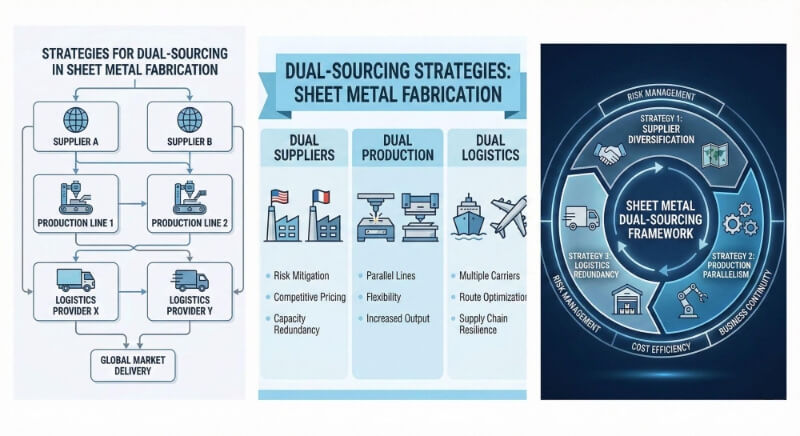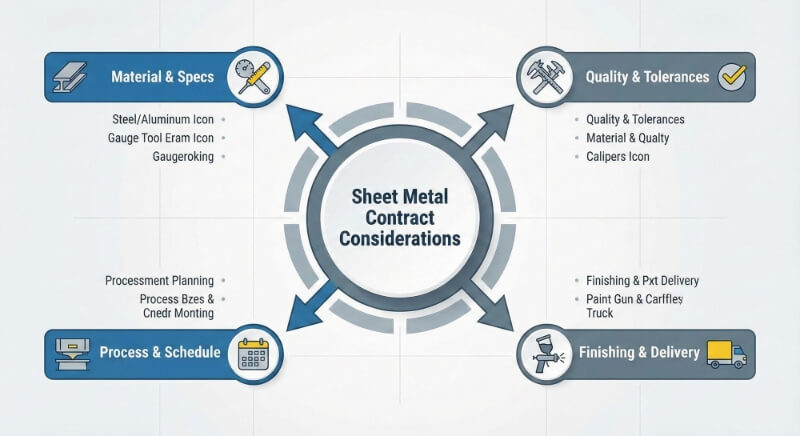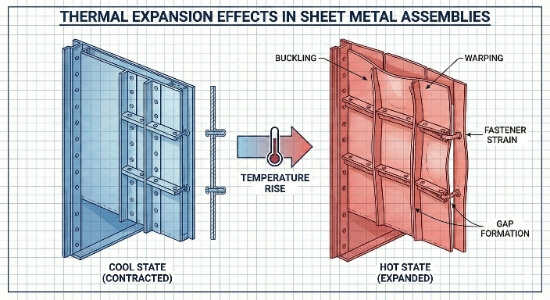Do you ever confuse drilling with dull? You are not the only one. Both machining processes are similar, but they serve different purposes. You can find out the differences by reading this post. This post is for anyone interested in machining, whether you are in engineering, manufacturing, or simply curious.
Boring enlarges a hole that has already been created by drilling. A rotating drill bit is used to create a hole in the material. Boring uses a single-point cutting tool to extend an existing drilled or cast-in hole.
Understanding the differences between processes is essential when choosing the best process for your project. We’ll explore each process in detail to see how it impacts your manufacturing needs.
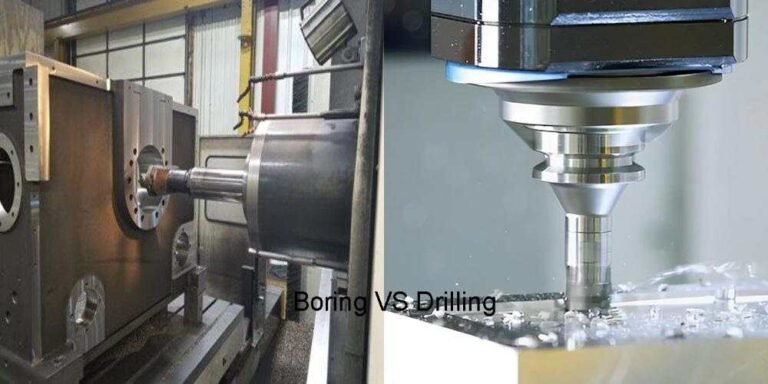
Understanding Drilling
Definition for Drilling
A drill bit is used to cut a hole into a solid. The drill bit is a rotating cutting tool that removes material to create a cylindrical hole. This process is used in many industries to create openings for fasteners and pipes.
Different Types of Drilling
Standard Drilling
This type creates holes with a standard depth and diameter. This is used for various applications, from household repairs to manufacturing.
Deep Hole Drilling
This technique creates holes that have a high depth-to-diameter ratio. This technique requires special equipment for precision and accuracy. It is often used in the oil and aerospace industries.
Micro Drilling
This involves creating tiny holes, typically less than 0.5mm in diameter. It requires high precision and is used in electronics, medical devices, and other fields where tiny, accurate holes are necessary.
Drilling Tools and Equipment
- Drill bits: Drill bits are available in different sizes and shapes to accommodate a variety of materials and hole sizes. There are many types of drills. Some include spade drills and twist drills.
- Drilling machines: These machines offer the power and precision required for drilling. These machines range from small electric drills for simple tasks to large CNC drilling machines for high-precision work.
Drilling Techniques
- Manual Drilling: Using handheld tools, holes are created. This method is suitable for smaller-scale tasks or those that require less precision. It also requires the operator to exert physical effort.
- Drilling with CNC: The CNC drill is controlled by automated machines. This technique is ideal for complex and mass-produced projects because it ensures precision and repeatability.
Drilling Applications
- Construction: Drilling holes is necessary to install anchors, fasteners, and utilities. Drilling is used to install fixtures and build foundations.
- Manufacturing: Drilling is used in manufacturing to create holes to assemble components, install hardware, and prepare materials for further processing. Drilling is crucial for manufacturing machines, vehicles, and other goods.
- Mining: Drilling is used to explore and extract mineral deposits. Boreholes can be drilled to reach resources, analyze geological formations, and assist in extraction.
Understanding Boring
Definition for Boring
Boring is a machining procedure that increases the diameter of a previously drilled or poured hole. It also improves its surface finish and accuracy. Boring is a machining process that enlarges a hole previously drilled or cast, improving its accuracy and surface finish.
Types Of Boring
Line Boring
This method involves expanding holes in a line. It is typically used to repair or create engine cylinders and gearboxes.
Back-boring:
The method enlarges a hole by extending it from the inside. It’s often used when access outside the hole is restricted.
Precision Boring
This boring type focuses on producing very tight tolerances and excellent surfaces. This is for applications requiring high-precision mechanical parts.
Boring Tools & Equipment
- Boring bars: This is the primary tool used for boring. It consists of a bar that has a cutting device mounted on it. Boring bars come in various sizes and types to suit various applications.
- Boring Bars: These adjustable cutting tools are used with boring heads. Boring heads are adjustable to produce precise dimensions and finishes.
Boring Techniques
- Manual Boring: This involves using manual tools and machines to enlarge holes. While it requires skilled operators and can be time-consuming, it is suitable for small-scale or less complex tasks.
- Computer-controlled boring: The CNC machine is controlled by a computer. This technique is ideal for complex parts and mass production because of its high precision, efficiency, and repeatability.
Applications of Boring
Automotive Industry
Boring in the automotive industry is used to machine engine blocks, cylinder heads, and other components requiring precise holes and smooth surfaces.
Aerospace Industry
In the aerospace industry, boring ensures the accuracy and precision of components such as turbine engines, landing equipment, and structural elements, where precision and accuracy are paramount.
Heavy Machines
Boring plays a crucial role in manufacturing and maintaining heavy machinery.
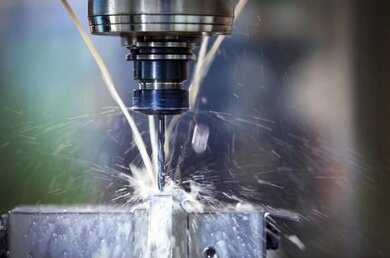
Boring VS Drilling: What’s the Difference?
Objectives and Purpose
The primary purpose of drilling is to make an initial hole. Drilling is the first step to creating an opening for bolts or fasteners.
Bland can be used to increase the diameter of an existing hole and improve its surface finish. This step is essential for achieving precision applications’ final dimensions and tolerances.
Tools & Equipment
Drill bits come in different sizes and shapes to accommodate materials and hole diameters. There are many types of drills. These include spade drills and twist drills.
Boring is done with boring heads and boring bars. Boring heads and boring bars are used to bore holes.
Techniques
- Speed and precision of drilling: The initial hole is created by drilling, which is usually faster than boring. This method is effective at quickly creating holes but may not provide the precision needed for specific applications.
- Accuracy and Finish in Boring: Boring is focused on accuracy and finish. Boring is a slower method than drilling, but achieving tight tolerances and smooth surfaces is essential.
Use Cases and Applications
When To Use Drilling?
The best time to use drilling is when creating the first hole in your workpiece. Typical uses include drilling pilot holes, openings for bolts and screws, and holes in different materials.
When Boring Is Used?
Bland can refine and enlarge an existing hole to meet exact specifications. Boring is crucial to ensure that holes are the exact size and finish required.
Boring VS Drilling: Advantages and Disadvantages
Drilling Advantages
Speed:
Drilling can be done quickly, which is ideal for drilling initial holes. This speed is essential in environments with high production volumes where efficiency is critical.
Simplicity:
Drilling is simple and can be done with handheld tools. Its simplicity allows it to be used for various applications, including DIY projects and industrial manufacturing.
Versatility:
Drilling suits various materials, including wood, metals, plastics, and masonry. The different types of drill bits are adaptable to different tasks and materials.
The Disadvantages Of Drilling
Limited Precision:
Although drilling effectively creates initial holes, it lacks precision for the final dimensions and tolerances.
Tool Wear Potential:
Drills can wear out rapidly, especially when drilling more rigid materials. To maintain accuracy and efficiency, replacing or sharpening tools frequently is essential.
The Benefits of Boring
High precision:
Boring ensures exact dimensions and tight tolerances.
Smooth Surface Finish:
Boring produces a smooth surface finish ideal for components requiring minimal friction or wear.
Ability to Correct Misalignment:
Boring can correct misalignment and ensure that the hole meets the specifications required for assembly and functionality.
The disadvantages of boring
A slower process:
Boring takes longer than drilling because it requires fine-tuning the hole dimensions and finish. This slower pace is a disadvantage for production environments that are time-sensitive.
Complex Setup:
Boring is a more complex setup than drilling. It often requires specialized equipment and operators with specialized skills. This can result in higher costs and longer prep times.
Boring VS Drilling: A Quick Comparison
This comparison highlights the critical differences between drilling and boring, helping you choose the suitable method based on your specific needs.
| Aspect | Drilling | Boring |
|---|---|---|
| Purpose and Objectives | Creating initial holes | Enlarging and refining existing holes |
| Tools and Equipment | Drill bits, drilling machines | Boring bars, boring heads |
| Techniques and Processes | Fast process, limited precision | Slower process, high precision, smooth finish |
| Advantages | Speed, simplicity, versatility | High precision, smooth finish, ability to correct misalignment |
| Disadvantages | Limited precision, potential for tool wear | Slower process, more complex setup |
| Applications | Construction, manufacturing, mining | Automotive, aerospace, heavy machinery |
| Best for | Initial hole creation | Achieving exact dimensions and tight tolerances |
| Manual vs CNC | Can be manual or CNC | Primarily CNC for precision |
| Industry Benefit | Versatile, used across various industries | Industries requiring high precision and quality finishes |
Boring VS Drilling: Selecting the Right Method
Factors to consider
- Material type: The material you work with will significantly impact the decision between drilling or boring. The versatility of drilling allows it to be used on various materials, including wood, metal, plastic, and even some types of plastic. Boring is the best option for materials that need high precision and a smooth finish.
- Hole Characteristics You Want: Think about the characteristics you want for the hole. Boring is the best option if you need a hole with exact dimensions and a smooth finish. Drilling is sufficient for initial hole creation when precision isn’t as important.
- Production volume: The drilling process is more efficient and faster for high-volume production, so it’s ideal for quickly creating multiple holes. Boring is a slower method best suited to low-to-medium volume production, where precision is critical.
Conclusion
You can choose the best process for your project by understanding the differences between boring and drilling. Consider the material type, desired hole characteristics, and production volume when choosing between boring and drilling. Industry-specific requirements and best practices will influence your decision. This ensures that you choose the method most appropriate to achieve the best results.
Understanding and managing CNC machining tolerances are essential for producing high-quality and reliable parts. Correctly specifying and maintaining tolerances ensure parts fit together and function as intended.
Do you need a reliable sheet metal parts manufacturer? Shengen is the place to go. We specialize in sheet metal laser cutting, bending, surface finish, and CNC Machining. Reach out to Shengen Today and seek help from professionals!
FAQs
Can initial holes be created by boring?
Bland cannot be used to create the initial hole. Bland is used to enlarge a hole created by either drilling or casting.
Which industries are most affected by boredom?
The industries most likely to benefit from boring include those requiring high precision and smooth surfaces. Automotive, aerospace, and heavy machinery are among the industries that benefit the most from boredom. Boring components ensure that they meet performance and safety standards.
What is the impact of CNC technology on drilling and boring?
The CNC technology has improved both the drilling and tedious processes. CNC drilling machines are ideal for high-speed, high-precision holes in mass production. CNC boring machines ensure tight tolerances, smooth surfaces, and precise control over the tedious process.
More Resources:
CNC vs. Manual Machining – Source: UTI
Types of Drill Bits – Source: Redboxtools
Deep Hole Drilling Explained – Source: UNISIG
Hey, I'm Kevin Lee

For the past 10 years, I’ve been immersed in various forms of sheet metal fabrication, sharing cool insights here from my experiences across diverse workshops.
Get in touch

Kevin Lee
I have over ten years of professional experience in sheet metal fabrication, specializing in laser cutting, bending, welding, and surface treatment techniques. As the Technical Director at Shengen, I am committed to solving complex manufacturing challenges and driving innovation and quality in each project.

